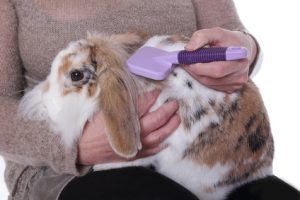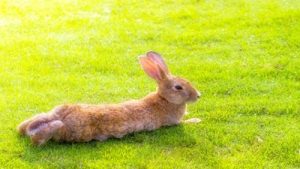Rabbit Care, Behaviour & Welfare Diploma Level 3
- This comprehensive rabbit course covers essential aspects of rabbit care, psychology, behaviour, nutrition, environmental enrichment, transportation and more.
- It provides valuable foundation knowledge for anyone wanting to work with rabbits in various roles at an animal charity, veterinary practice or in the pet care sector such as at a pet shop, pet sitting or pet boarding company.
- It is also suitable for Local Authority Animal Health Officers, Housing Officers, Trading Standards & Environmental Health Officers and Local Authority Licensing Officers.
- This course has been designed to support the proper and understood care and welfare of the rabbit
Unit 1
Anatomy and Physiology
Unit 1 explores anatomy & physiology to provide the learner with an understanding as to why a rabbit should be considered a complex, valuable & fascinating organism.
Welfare issues are mentioned in a number of systems for example, the skeletal & integumentary systems.
Unit 2
The Digestive System & Nutrition
This nutrition unit will provide the learner with the knowledge that can be applied to feeding in terms of what to feed a rabbit & why such food is correct.
Unit 3
Enrichment & Accommodation
Having free access to unlimited and varied exercise is an important part of a rabbit’s emotional health. This unit also explores suitable rabbit accommodation.
Unit 4
Rabbit Health & Disease
Learn how to carry out regular health checks. and how to recognise and respond to ill health and disease in rabbits.
Unit 5
Behaviour and Psychology
This unit introduces the behaviour & psychology of the rabbit according to their biology. Learn how to provide a stimulating environment for rabbits.
Unit 6
Rabbit Welfare
Understand what the Law says about animal welfare & adherence to that Law, against the ignorance of how so many rabbits are kept.
The rabbit is one of the most neglected companion animals in the UK. This neglect is brought about by the lack of understanding of their needs and the idea that a rabbit is easy to care for, with a minimum of effort (and therefore, unfortunately often purchased as a suitable pet for children). The rabbit is only easy to care for if you know what you are doing and have an understanding of the animal. Although buying a rabbit is easy, information about how to care properly for that rabbit is limited in depth. Information may indeed be available but rabbit care is very poorly understood and with the availability of the types of accommodation typically sold for rabbits, the problems begin.
Typical accommodation is a rabbit hutch – the time-served structure that can be found at just about every garden centre and pet shop across the country. But does a rabbit buyer consider that the rabbit is “designed” for living in a hutch? The answer to that question is “no” because most often the buyer does not think or consider what a rabbit actually is. In the wild state, the rabbit may live in a burrow but has free access to the outside world where he can be a rabbit. He is not enclosed in his burrow, waiting for someone to bring water and food nor is he restricted in being able to move as a rabbit is meant to move.
The rabbit’s skeleton is structured for rapid movement driven primarily by the structure of the hind limbs and feet which are significantly larger than the front limbs. The spinal column, being strongly curved, accommodates the specialised structure of the strong hind limbs and accompanying musculature.
In the wild state, a rabbit chooses food that is suitable without thought. Apart that is from parental guidance that shows him or her, the right foods to eat. Wild rabbits do not suffer from digestive problems brought about by being provided the wrong foods or the wrong balance of foods. Nor does the wild rabbit suffer from dental problems brought about by the latter. The right foodstuffs for a wild rabbit allow the teeth to be exercised and worn down at the correct rate so that the continuous growth pattern does not outweigh the wear rate. Confined rabbits who do not receive a correctly-balanced diet suffer from malocclusion and abscesses as well as severe digestive problems. Abscess formation is likely to lead to death. Another dental issue is linked to calcium and how
With digestive problems comes the external issue of being attacked by pests such as the blow-fly which lays eggs that mature to larvae (maggots). Digestive problems that cause poorly-formed deposits from the bowel provide an ideal food source for the blow-fly larvae (maggots). Fly-strike occurs whereby the maggots not only consume the deposits around the anus but burrow their way into the anal opening and start to consume the internal soft tissue.
Rather than just a catalogue of “information” laid out in encyclopaedic form, this course has the aim of tackling the ignorance of what the captive rabbit needs from a biological approach. Demonstrating the underlying biology of the rabbit should enlighten why the rabbit must be cared for in a particular way. Therefore each module of this rabbit course is prepared with the proper welfare of the rabbit in mind from physical to emotional health.
We offer a selection of accredited and employer recognised courses specifically designed for careers working with animals.
If you have any questions about our courses, please contact us.
We’ve assisted many people to achieve their goal to work with animals. Read more about our 5-star reviews and student success stories.
Gain relevant training to achieve your goal to work with animals.



